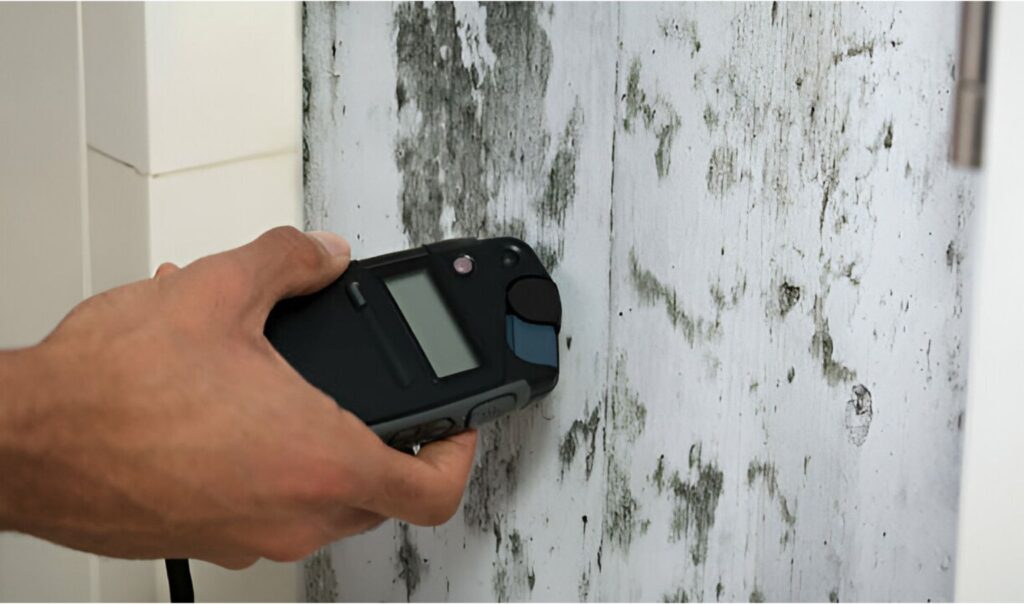A mold inspection is an important step you need to take to maintain a healthy living environment within your home and to protect your property. Mold can be a reason behind various health issues, such as respiratory problems, skin irritation, and allergic reactions. If individuals with allergies, asthma, or weakened immune systems are living in your home, then you need to be extra careful about mold.
Most of the times, mold pose threats that go beyond health concerns. It can damage the building’s structural integrity by weakening materials like drywall and wood, which can often lead to expensive repairs. The worst part is that it’s not easy to detect mold. This intruder can grow in hidden areas like under flooring or behind walls – going unnoticed until it becomes a serious issue. For this reason, you need to schedule regular mold inspections. These can help identify and address mold early, preventing its spread and minimizing the remediation costs.
Whether you’re buying a property or selling, it’s important to add mold inspections to your “to-do list”. This will help ensure that the property is safe and free of mold, facilitating smoother transactions. Besides this, documented mold inspections are also important for insurance claims. One of the main parts of mold inspections is understanding how these work and that’s exactly what we will cater to in this blog.
How to Test for Mold In Different Buildings?
Every property has to offer different challenged when it comes to mold testing. With the different structures, locations, and sizes, the mold testing process varies from building to building. Here we have broken down the process of testing for mold in a house, apartment, and a commercial building.
How to Test for Mold in A House?
One of the best ways to test for mold is just by letting your nose sniff around the areas with water damage, moisture, and discoloration. Where there is mold, most of the time, there’s a musty odor. This is a simple way to identify mold in damp environments. Also, mold is often hidden, so if you’re suspicious about its presence, it’s better to look around you; you may check:
- Inside ductwork
- Behind drywall
- Under carpets
- In between bathroom tiles
- Moisture prone areas
Some other visible signs of mold in your home are:
- Bubbled paint
- Uneven hardwood flooring
- Discoloration of finished surfaces
To test for mold in your home, you can also carry out a formal test with a home testing kit. Usually, these come with petri dishes that you can place in a location where you suspect mold growth. You need to keep the dish at such a location for about 24 to 48 hours. The dish will then collect mold spores, which will then be tested by a lab.
The best way to detect mold in your house is by hiring a mold professional who can locate a mold issue within your house. The cost of mold inspection can depend on the extent of the issue and the size of your house. So, it can range anywhere from $400 to $3000.
How to Test for Mold In An Apartment?
Testing for mold in an apartment is similar to testing for mold in a home. You may start with visually inspecting the apartment, looking for visible signs of mold, such as, black, green, or white spots on walls, ceilings, and other surfaces. You will most likely find these in moisture-prone areas like kitchens, bathrooms, and around windows.
Additionally, use moisture meters to identify areas with high moisture levels that might lead to mold growth. Besides these, you can also get tape lift or swab mold testing kits from a hardware store or online to test for mold. These kits let you collect surface samples using tape lift or swab methods to gather mold from suspected areas, later sending them to the laboratory for analysis.
Note: follow the instructions that come with these kits for accurate sampling.
If you wish to get more accurate and comprehensive results, you may consider hiring a professional mold inspector who can use specialized equipment and techniques for identifying mold. They will also send collected samples to a certified lab for detailed analysis to identify mold types and concentrations.
Based on the findings, you shall take necessary remediation actions to address and eliminate mold issues, ensuring a safe and healthy living environment in your apartment.
How to Test for Mold in Commercial Properties?
To test for mold in commercial buildings, you need to first understand the building’s history, reported moisture problems, and previous mold issues. Then, conduct a thorough visual inspection and focus on:
- Common areas
- Offices, restrooms
- Kitchens
- HVAC systems
- Basements
- Storage areas
Look for visible signs of mold and musty odors. You may then use moisture meters to detect areas with elevated moisture levels, especially around plumbing fixtures, roofs, windows, and foundations. Besides this, conduct an air quality test that will measure the concentration of airborne mold spores. To get additional data about the mold growth, you may carry out surface sampling from suspected areas.
For commercial buildings, you or the professional inspector you hire may also use infrared thermal imaging to identify hidden moisture and mold growth behind walls and ceilings. Collect the samples and send them to a certified laboratory for analysis to determine the types and concentrations of mold present. Compile the findings into a detailed report with recommendations for remediation and moisture control. After remediation, a follow-up inspection ensures that mold has been effectively removed and moisture issues resolved, confirming the success of the remediation efforts.
Conclusion
Professional mold testing involves different steps. At first, the mold inspector checks the entire property thoroughly, looking for the visible signs of mold. They pay attention to areas with water sources like sinks, tubs, pipes, and showers. If the inspector doesn’t find any visible mold, then they conduct different tests using special equipment. This helps them determine the hidden mold’s location.
Once they have detected the mold, they take the samples to the lab for further testing and determining the mold’s type and its level of toxicity. After they take the samples to the lab, mold experts then conduct a further examination – identifying mold species.
After getting the test results from the lab, a mold professional can recommend the best ways to mitigate mold issues. They will also provide a written report that will highlight their findings, pictures, and recommendations on how to handle mold. These reports are very important as they help in mold removal and remediation using accurate and effective methods.
Don’t Let Mold Take Over Your Home – Get Peace of Mind with Ally Property Inspections Expert Mold Testing Services.


